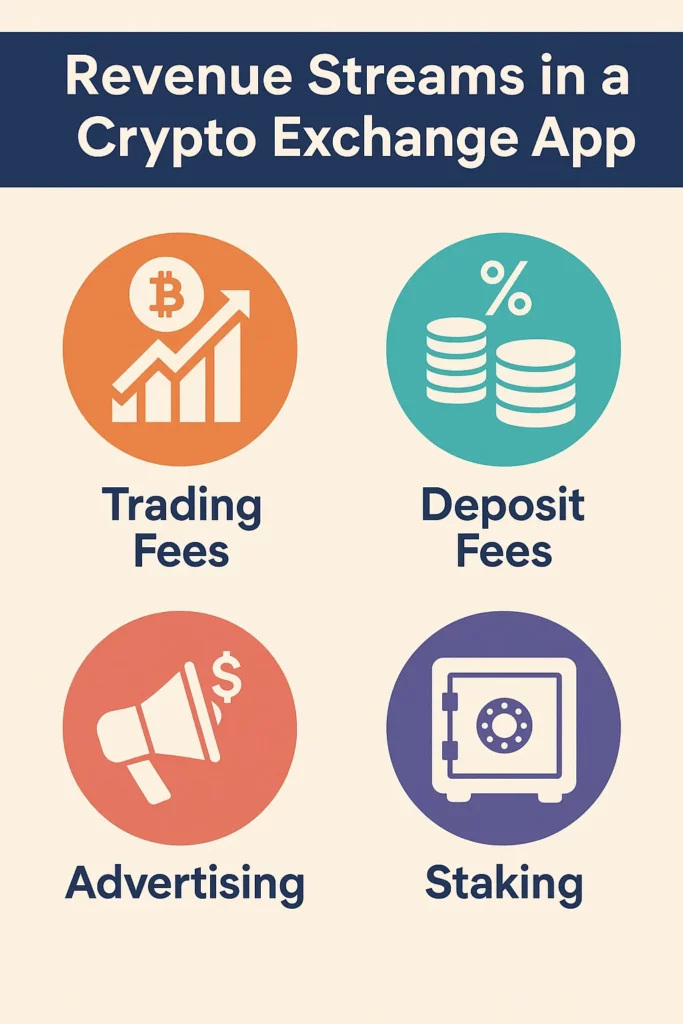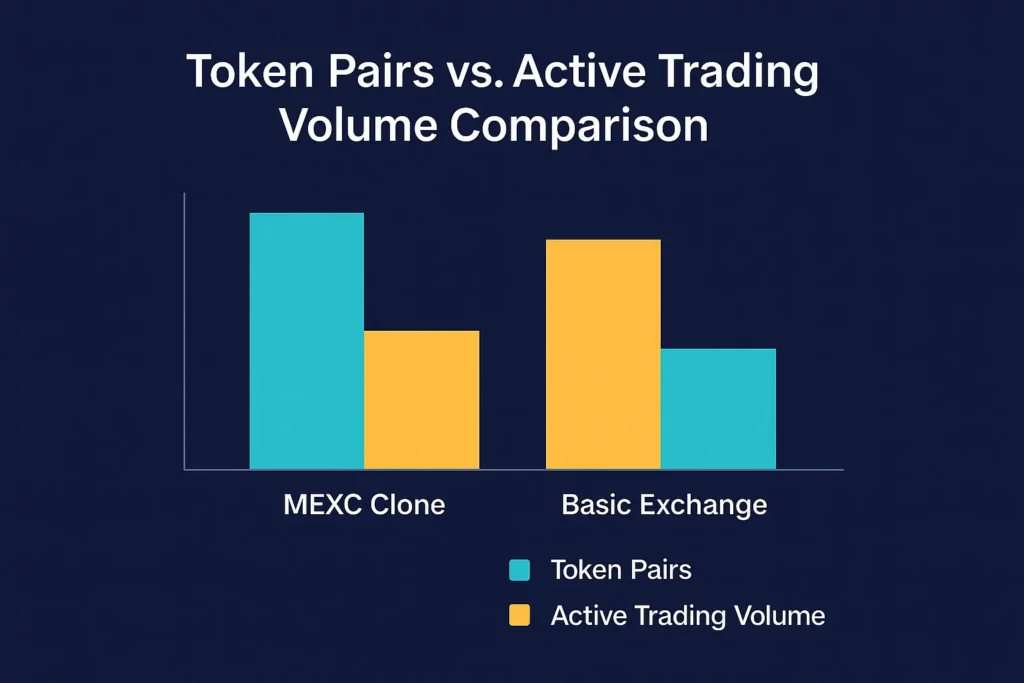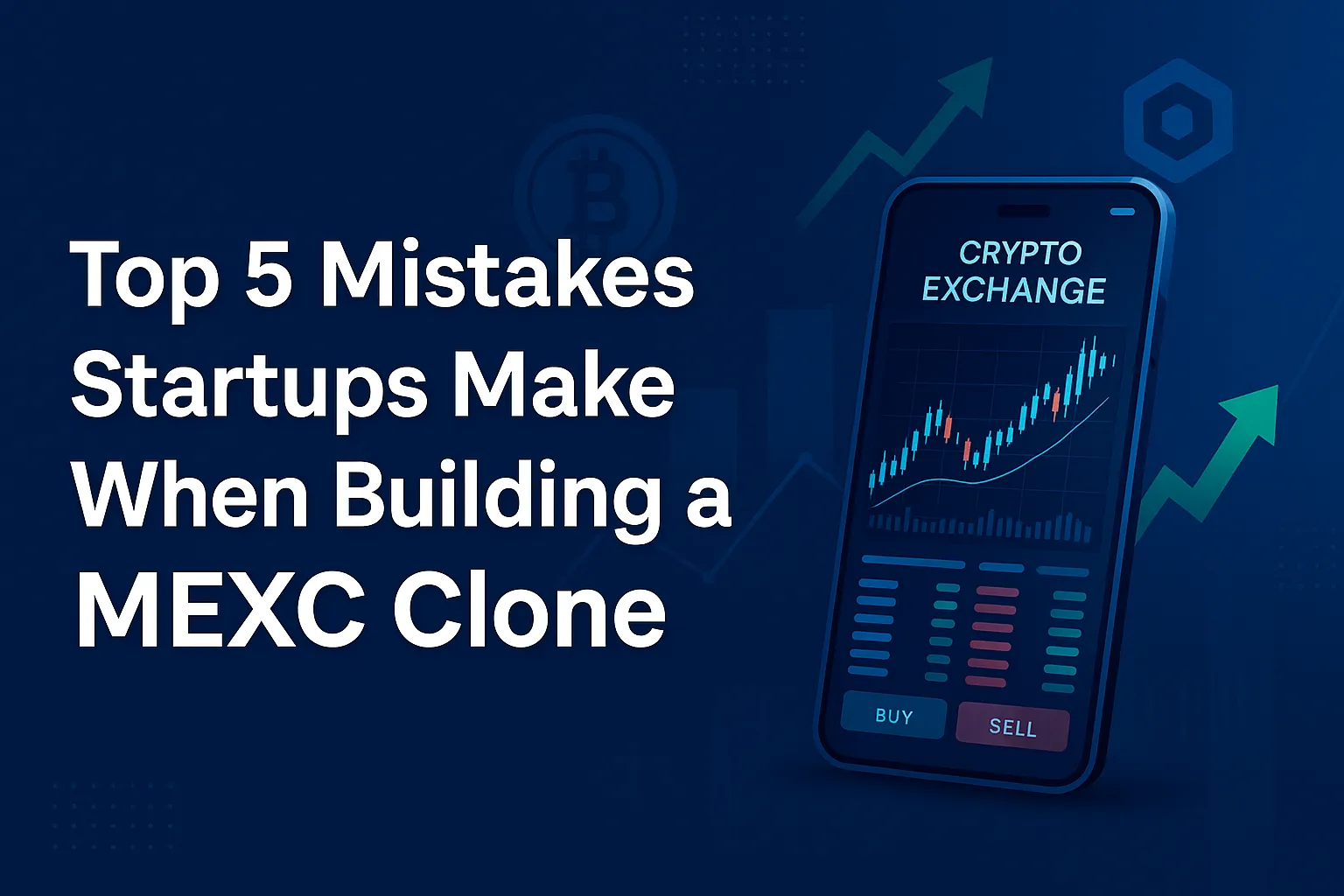Let’s be honest—cryptocurrency is like a rocket. When it takes off, the sky’s the limit. Startups everywhere want a piece of the action, and what better way than to build your own MEXC-style crypto exchange? It sounds cool, disruptive, and, let’s face it, potentially very profitable. But here’s the thing: jumping into crypto exchange development without a map is a shortcut to chaos.
We’ve seen this movie before: an excited team, a sleek UI mockup, a whitepaper with lots of buzzwords… and then radio silence post-launch. According to CB insights running a crypto exchange like MEXC isn’t just tech—it’s regulation, liquidity, token management, user trust, and split-second reliability.
At Miracuves, we’ve helped visionaries avoid landmines when cloning exchanges like MEXC. Let’s unpack the five critical mistakes startups keep making—so you can steer clear and build smart from the start.

Mistake 1: Skipping Compliance and Regulatory Features
Crypto is sexy. Compliance? Not so much. But if you’re planning to operate a real MEXC clone, compliance isn’t optional. Startups often make the mistake of launching globally without understanding regional regulations.
Whether it’s KYC, AML, or digital asset classification, each jurisdiction has its own flavor of laws. One wrong move and your app could get geo-blocked or fined out of existence.
Avoid it by:
- Consulting crypto legal experts
- Integrating modular KYC/AML tools
- Geo-fencing features based on local rules
Learn More: Top MEXC App Features Explained for Crypto App Builders
Mistake 2: Underestimating Liquidity and Token Pairing Complexity
Users won’t stick around if your platform feels like a ghost town. Startups often clone MEXC without building liquidity infrastructure. That means no real-time matching, wide spreads, and shallow order books.
MEXC thrives because it has deep liquidity and hundreds of token pairs supported by market makers and smart routing.
Get it right with:
- Partnerships with liquidity providers (LPs)
- Dynamic market-making bots
- Cross-pair routing logic
Mistake 3: Copying UI Without Matching UX Intelligence
Design is more than pixels. MEXC’s UX is engineered for both newbies and pro traders.
Startups often clone the homepage but forget:
- Multi-screen trading dashboard
- Real-time alerts & analytics
- Customizable chart widgets
Users expect fluid, responsive, and informative interfaces that don’t feel clunky or overdone.
Mistake 4: Leaving Security and Scaling for “Later”
It’s all fun and games until your platform gets DDoS’d or a wallet gets compromised. MEXC-level security isn’t a luxury—it’s a must.
Many startups launch MVPs with no 2FA, no wallet fragmentation, and no audit trail. That’s like parking a Ferrari with the doors unlocked.
Start secure:
- Cold-hot wallet segregation
- Multi-sig withdrawal authorizations
- Real-time anomaly detection
Mistake 5: Delaying Monetization Strategy Until After Launch
You’re not just building a product—you’re building a business. Many clones forget to build in monetization levers.
MEXC earns via:
- Trading fees (maker/taker)
- Token listing fees
- Margin lending and futures
- VIP membership tiers
Learn More: Pre-launch vs Post-launch Marketing for MEXC Startups
Build for revenue early:
- Add flexible fee modules
- Launch token staking pools
- Offer tier-based benefits for power users
Launch Your Own MEXC Clone with Miracuves

Conclusion
Launching a MEXC-style crypto exchange is ambitious—and that’s awesome. But ambition needs guardrails. These five startup slip-ups? They’re avoidable with the right roadmap.
At Miracuves, we help innovators launch high-performance app clones that are fast, scalable, and monetization-ready. Ready to turn your idea into reality? Let’s build together.
FAQ’s
1) Is it legal to build a MEXC clone?
Yes, as long as you’re not infringing on branding/IP and follow the legal frameworks in your launch regions.
2) How much does it cost to develop a MEXC-style exchange?
Building a MEXC-style exchange with all essential trading and security features can cost $3299 with Miracuves.
3) What tech stack is best for a crypto exchange?
Node.js or Go backend, React frontend, Redis + PostgreSQL for data, and Kubernetes for scaling.
4) Can I support altcoins and tokens?
Absolutely. With the right integration logic, you can support Ethereum, BSC, Solana, and even cross-chain swaps.
5) How do I make money with a MEXC clone?
Through trading fees, token listings, staking pools, ad placements, and VIP user tiers.
6) What about security?
Bank-grade. Include 2FA, cold wallet storage, audit logs, and anomaly alerts. Always run third-party audits.








